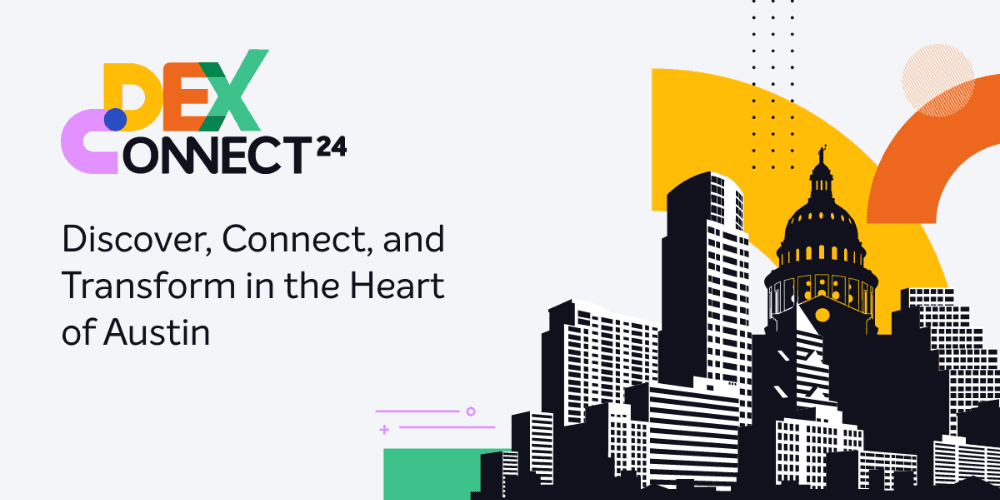What is Voice of the Employee?
Voice of the Employee refers to the strategies employed by businesses to maintain a continuous feedback loop with employees to measure their engagement and happiness. It’s frequently adopted to improve the employee experience and, in turn, benefit the customer experience.
Here we explore 5 reasons why enterprises should adopt Voice of the Employee strategies in the wake of COVID-19’s seismic impact on the traditional workplace.
1. Prepare for a new way of working
In the US alone, 46 million people have moved from offices to full-time remote working. Many employees had little to no experience whatsoever of remote working and yet are likely to sustain this new way of working with the advent of the Work From Anywhere Enterprise. Gathering feedback from employees about their personal experiences with remote working helps organizations paint a clear picture of employee sentiment toward remote working and what support to put in place for those workers who won’t be returning to the office.
One area of focus for many organizations is the manager-employee dynamic. Many managers weren’t prepared for leading a remote workforce and perhaps lack the communications skills or trust in their workforce to effectively do so. Being able to intervene quickly can only happen through continuous dialog with both managers and their direct reports.
Two-way dialog is also key to ensuring you bring your workforce along on your journey to the new digital workplace. Gartner research shows that employees’ understanding of organizations’ decisions and their implications during change is far more important for the success of a change initiative than employees “liking” the change.
2. We need to talk about mental health
Everyone in some way has been emotionally impacted by the pandemic. As early as two weeks into lockdown, employees were reporting a range of health effects, including negative impacts on mental health and overall well-being. In 1E’s recent survey, two-thirds of employees stated feeling disconnected from the workplace during the global lockdown.
Many enterprises tackled the mental health challenges head-on from the outset. From group yoga classes and virtual Friday drinks to the more outlandish use of simulated office noises, organizations and teams tried hard to creatively ease the burden of isolation.
But now it’s time to think long term. The mental health implications of the pandemic will long outlive the pandemic itself. Anxiety and apathy, as well as loneliness, are some of the mental health consequences that will persist long after the pandemic ends.
Talking is often the best therapy and having confidants at work, who are also in a position to effect positive change, can significantly increase emotional wellbeing. It also helps HR leaders understand what support to put in place for employees in the long term. But it’s absolutely critical that these conversations take place in a psychologically safe environment to ensure you get honest feedback and the employee isn’t punished for expressing their concerns and fears. Leaders may not want to hear the truth, but the truth matters. And you can only get honest feedback when employees trust you enough to give it to you. Creating psychologically safe environments is proven to also drive engagement and performance, as employees feel they can bring their authentic selves to work and are more open to sharing different perspective, thoughts, and ideas.
3. We’ve developed a new relationship with technology
If employees had to select a Facebook relationship status for their technology, the majority would likely put “it’s complicated”. At no point in time have we ever been so dependent on our devices to communicate, socialize, and get work done. And yet, employees haven’t quite had the most stable of relationships with technology. Over a third of employees experience more IT issues when working from home, over half have to contend with slow-running devices and over two-thirds wait hours, days, or weeks to get IT issues resolved.
The impact of digital experiences on our perceptions of the workplace, as well as our productivity levels, is huge. Social collaboration tools, such as Zoom and Microsoft Teams, are used for both quiz sessions and business strategy planning, while cloud-based file sharing (such as G Suite) means teams can collaborate in real-time to get work done. Our dependency on technology won’t go away so understanding how the relationship has changed will help drive digital workplace strategies that are employee centric. This means also acknowledging and managing the dark side of technology too. “Zoom fatigue” is real, as is potential burnout from an always-on approach to tech-driven connectedness. Understanding the nuances of our use of technology is only possible by soliciting feedback from employees to marry objective analytics with real experiences.
4. If you’re not looking after your employees, who’s looking after your customers?
During uncertain times, the customer experience and customer loyalty matter immensely and are both shaped by your employees. Even those without a direct communication line to your customers will shape their experiences. Treating your employees as you would your customers (by seeking to understand their journeys, challenges, needs, and motivations) will provide valuable insight into how to foster positive employee engagement that results in a better experience for your customers.
The tangible benefits of better employee engagement are well-known. Companies with high employee engagement are 22% more profitable. That’s likely because an employee who feels positively about their company will be more genuine brands spokespeople. Enthusiasm and positivity are contagious, which is why this saying always rings true: A happy employee makes a happy customer.
5. It all boils down to company culture
Last but most certainly not least, we need to talk about company culture. In a pre-covid world, it wasn’t unusual to find job specs that showcased the features of the office. From games rooms to Friday drinks carts, the perks were both differentiating and commonplace, which meant they had an influence on how appealing your company felt to prospective candidates and existing employees.
So, what happens when you strip your company culture of anything physical? Your daily interactions are planned rather than spontaneous and in the moment, new employees lose out on getting a feel for a place based on the office “vibe”, you’re unlikely to interact with colleagues outside your team and beyond your work priorities because you lack a physical place for socializing.
Trying to create a company culture that no longer revolves around the office is a challenge for most organizations right now. But you can start by including your employees in those conversations to understand how you may need to refine or emphasize your company values, embrace new technology and upskill employees in new ways of communicating to help them develop relationships with people they’ve never met face-to-face.
Where do you start with Voice of the Employee?
Fortunately, Voice of the Employee isn’t new so there are best practices we can take from the recent past and apply them to the post-covid workplace. In next week’s blog in this series, 1E’s Senior HR Business Partner, Lisa Kumar, will share her expert advice on how to best gather employee feedback and data based on how the pandemic has changed the world of work for good.
More in this series
– Improving Positive Employee Sentiment is Your Number One Challenge







